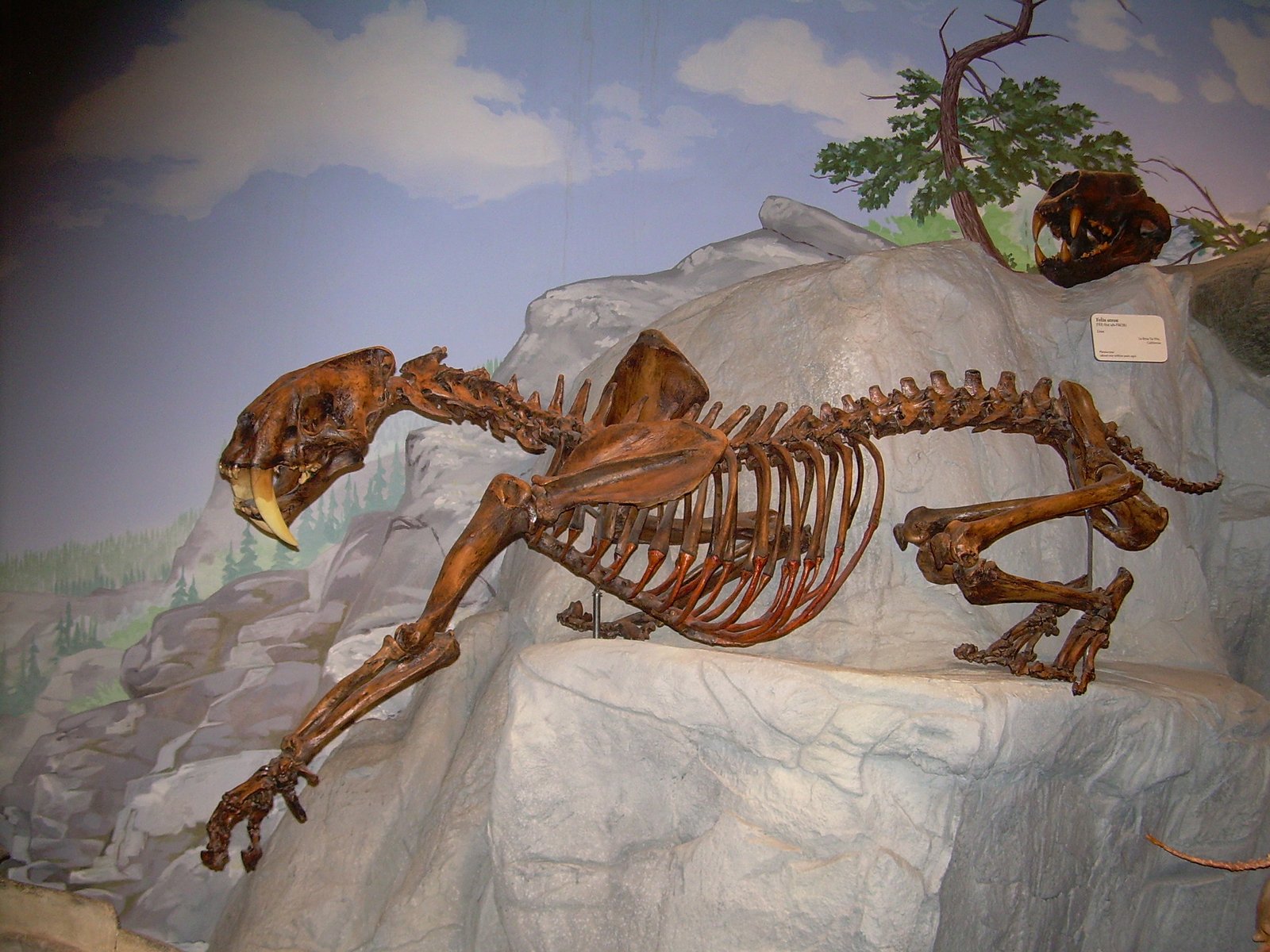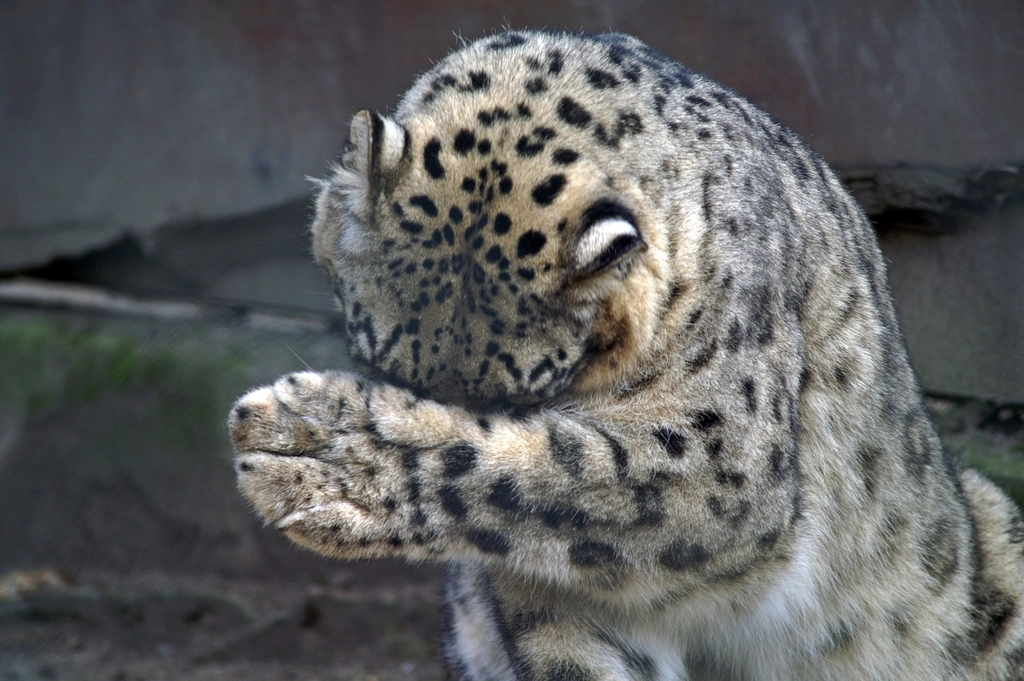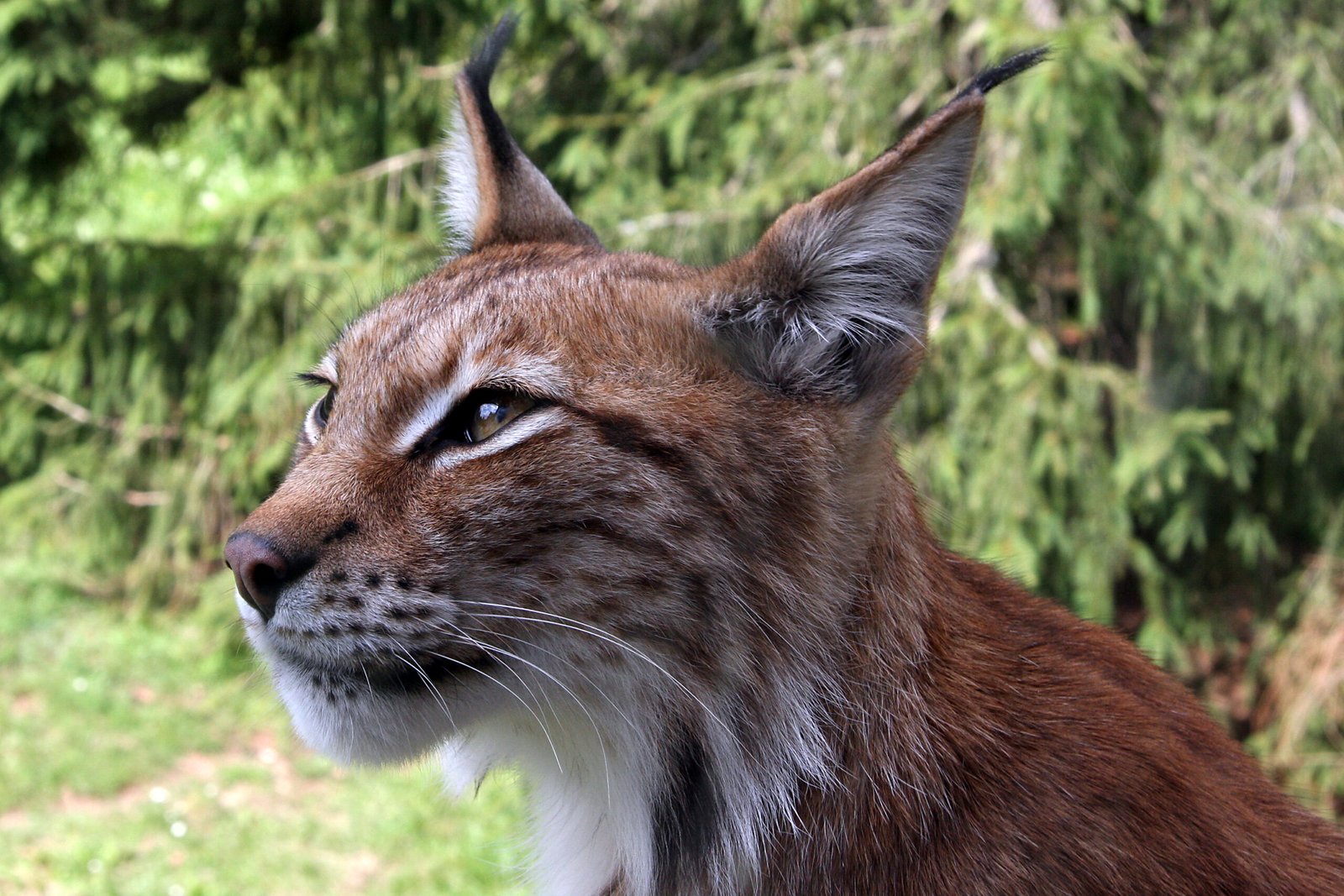Imagine strolling through ancient forests and suddenly spotting a massive cat—bigger than any lion you’ve ever seen—slipping between the trees. Europe once teemed with wild felines that would put today’s house cats to shame. Some were furry giants, others were ghostly hunters, but all of them shaped the continent’s wild history in jaw-dropping ways. Ready to meet the legendary big cats that used to prowl Europe’s lands? Let’s jump right in!
The European Cave Lion: King of the Ice Age

Towering over modern lions, the European cave lion was an Ice Age superstar. These majestic beasts could weigh up to 800 pounds—bigger than most modern tigers! Unlike today’s lions, they had no manes and sported a golden, thick fur that helped them brave freezing winds. Their bones have been unearthed in caves across Europe, hinting at their power and dominance. Imagine a lion with a woolly mammoth’s resilience—that’s how fierce these cats were. They weren’t just predators; they inspired ancient art and legends, their images etched onto cave walls by humans in awe. If you could time-travel, these lions would be the first to demand your respect.
Panthera spelaea: The Original “Cave Cat”

Known scientifically as Panthera spelaea, this cat is often confused with other lions—but it deserves its own spotlight. It wasn’t just a lion in a cave; it thrived in a chilly, mammoth-filled world. Panthera spelaea had longer legs and a slightly flatter face than today’s African lions, which probably helped it chase down speedy Ice Age prey. Its footprints have been found side-by-side with ancient humans, suggesting a rivalry—and maybe even a little mutual admiration. Picture a cat so famous, it’s been painted, carved, and whispered about for centuries. That’s the cave lion’s legacy!
The Eurasian Lynx: Europe’s Elusive Survivor

Slinking through thick forests with tufted ears and a short tail, the Eurasian lynx is Europe’s mysterious, spotted shadow. While it’s one of the only big cats still living in Europe, its population once stretched from Spain to Siberia. Lynx are solitary, stealthy, and nearly invisible when they want to be—sometimes called “ghosts of the forest.” Their paws are like built-in snowshoes, letting them silently stalk prey even in deep winter. Kids growing up in lynx country swap stories of rare sightings, making the lynx almost mythical. If you spot one in the wild, consider yourself truly lucky!
The European Jaguar: Spotted and Spectacular

Long before jaguars ruled the Americas, their ancestors crept through Europe’s wilds. The European jaguar, with its powerful jaws and dappled coat, was a force to be reckoned with. These cats hunted everything from deer to prehistoric horses, using stealth and surprise. Some fossils suggest they were even bigger than their South American cousins. Imagine a leopard, but bulkier and bolder, patrolling rivers and forests. Their extinction left a giant, spotted hole in Europe’s ecosystem—a reminder of just how wild the continent once was.
The Scimitar-Toothed Cat: Europe’s Saber-Toothed Wonder

With teeth shaped like scimitars and a body made for speed, Homotherium—the scimitar-toothed cat—was Europe’s answer to the sabertooth tiger. Unlike the slow, lumbering predators you might imagine, these cats were built for the chase. They had long legs, a sloping back, and could run down prey in open grasslands. Their upper canines were shorter and more robust than the famous Smilodon’s, making them fierce but practical hunters. Close your eyes and picture a big cat with the attitude of a cheetah and the fangs of a vampire—it’s both terrifying and amazing!
Panthera atrox: The Mighty “American Lion” Invader

Though best known from the Americas, Panthera atrox also left its mark on Europe during ancient periods. Larger than today’s lions, this cat could reach nearly 1,000 pounds—a true heavyweight. Its powerful build helped it compete with wolves, bears, and even hyenas. Sometimes called the “American lion,” it’s a reminder of how animal populations shifted as continents connected and separated over time. Imagine a roaring lion the size of a small pony striding through ancient meadows—no wonder everything else kept its distance!
The Leopard’s European Legacy

Leopards aren’t just African adventurers; they once prowled all across Europe too! These adaptable cats lived from sunny Mediterranean shores to chilly northern forests, blending in wherever they roamed. Leopards are famous for their climbing skills, often dragging kills up trees to avoid scavengers—a trait that probably served them well in Europe’s dense woodlands. Ancient bones show they sometimes overlapped with early humans, sparking both fear and fascination. Think of them as the ultimate survivors, slipping through history’s cracks with quiet, deadly grace.
Lynx Lynx: The Charmer of Cold Climates

Not all lynx are alike, and the Eurasian lynx (Lynx lynx) stands out for its adaptability. These cats thrive in snowy forests and mountainous regions, using their keen eyesight to spot even the smallest movement. Their ear tufts act like radar, picking up sounds that would escape other hunters. Lynx lynx often leap through snowdrifts in pursuit of rabbits and birds, their thick coats keeping out the cold. Children in Scandinavia still hear bedtime stories about the clever, mysterious lynx. If you love a good animal underdog, this cat is your hero.
The Mysterious Panthera gombaszoegensis

This tongue-twister of a cat, Panthera gombaszoegensis, is one of Europe’s least-known big cats. It lived over a million years ago and probably looked like a cross between a lion and a jaguar, with a powerful build and possibly spots. Fossils are rare, mostly found in Italy and Hungary, but suggest it was a top predator of its time. Scientists still debate exactly what it looked like or how it hunted, adding to its mystique. Imagine a detective story where the main character is a giant, shadowy cat—this is that mystery come alive.
The Wildcat: Small, Fierce, and Still Here

Europe’s wildcat may seem modest compared to cave lions, but don’t be fooled. These cats are the ancestors of many domestic breeds and have survived through sheer cunning. Wildcats blend into forests, stalk small prey, and fiercely defend their territory. Unlike house cats, they rarely meow and almost never purr for people. Spotting a wildcat is a badge of honor for hikers and nature lovers. If you think small means harmless, you’ve never met a wildcat on its own turf!
The Iberian Lynx: Rarest Cat in Europe

With its tufted ears and soulful eyes, the Iberian lynx is Europe’s rarest and most endangered big cat. Once found across Spain and Portugal, it’s now limited to a handful of protected areas. The Iberian lynx has a taste for rabbits and a coat speckled with striking black spots. Conservationists have worked tirelessly to bring it back from the brink, and every new kitten is a cause for celebration. If you ever see one in the wild, you’re witnessing a true conservation miracle.
The Steppe Lion: Lost King of the Grasslands

Before Europe was blanketed in thick forests, vast grasslands stretched as far as the eye could see. Roaming these open plains was the steppe lion—a close cousin of the cave lion, but adapted for life in windy, treeless spaces. This big cat could chase down wild horses and even giant deer, using speed and teamwork. Fossils show it survived through tough Ice Age winters. If you’ve ever watched a lion chase a gazelle on TV, imagine that scene but colder, wilder, and more epic.
The Pleistocene Leopard: Ice Age Survivor

Leopards in the Pleistocene era were tougher and larger than those in Africa today. With thicker fur and more robust bodies, they adapted to chillier climates and a wider range of prey. They were expert climbers, often escaping larger predators by scaling rocks and trees. Ancient cave paintings even show spotted cats leaping through snowy landscapes. These leopards prove that with the right attitude—and a little extra fur—you can survive almost anywhere.
The Balkan Lynx: Phantom of the Balkans

Hidden away in the rugged mountains of the Balkans, this lynx is one of Europe’s most elusive big cats. The Balkan lynx is a subspecies of the Eurasian lynx, but it’s smaller and even more secretive. Only a few hundred remain, making it one of the rarest cats in the world. Locals tell stories of seeing its ghostly shape slipping between trees at dusk. The Balkan lynx is a living reminder of Europe’s wild past, clinging to survival against all odds.
The Panthera fossilis: Europe’s Ancient Giant

Before the famous Panthera spelaea, there was Panthera fossilis—a truly ancient giant. This cat lived almost two million years ago and was even bigger than the cave lion. Its fossils have been dug up in Germany and Britain, suggesting it dominated the landscape. Panthera fossilis likely hunted huge prey, making it the apex predator of its time. If you think today’s lions are big, this cat would have made them look like cubs.
The Glacial Leopard: Spotting Danger in the Snow

Sometimes called the “glacial leopard,” early leopards in Europe were built for icy conditions. Their coats were even thicker, and their paws broader, to handle deep snow. These cats hunted mountain goats and sheep, leaping between icy ledges with a gymnast’s grace. Imagine a snow leopard, but with a European attitude—tough, resourceful, and always ready to surprise you.
The Lynx pardinus: Iberia’s Spotted Beauty

Not to be confused with its Eurasian cousin, Lynx pardinus is all about style. Its fur is covered in dramatic, inky spots, making it one of the world’s most beautiful wild cats. Found only in the Iberian Peninsula, it’s adapted to hunting in scrubby, rabbit-filled landscapes. Conservationists call it a “living gem” of Europe’s wildlife. If fashion shows had a feline category, the Iberian lynx would win every year.
The Martelli’s Cat: Mystery of the Mediterranean

Martelli’s cat is a little-known prehistoric feline, believed to have roamed Italy and nearby islands during the Pliocene era. Smaller than panthers but bigger than house cats, Martelli’s cat filled a unique niche as a nimble, agile hunter. Its fossils suggest it was a skilled climber, able to escape larger predators by darting up trees. While it’s long extinct, Martelli’s cat adds a dash of mystery to Europe’s feline family tree.
The Forest Panther: Europe’s Tree-Climbing Predator

Some ancient big cats in Europe specialized in tree-living, much like modern leopards or clouded leopards. These “forest panthers” had long, flexible bodies and sharp claws for climbing. They could stalk prey from above, pouncing with silent precision. Fossils found in ancient woodlands hint at their arboreal lifestyle. Picture a big, spotted cat leaping from branch to branch—nature’s original ninja.
The Carpathian Lynx: Mountain Majesty

Nestled in the heart of the Carpathian Mountains, this lynx is a symbol of wilderness. The Carpathian lynx is larger and more robust than other European lynxes, with a thick coat for harsh winters. It hunts deer and hares, using stealth and patience. Local folklore often celebrates the lynx’s sharp eyesight and mystical powers. In these misty forests, the Carpathian lynx reigns supreme, a true king of the highlands.
The Sardinian Lynx: Island Enigma

On the Mediterranean island of Sardinia, evidence suggests a unique, now-extinct lynx once prowled the hills. The Sardinian lynx was likely smaller than its mainland relatives, adapted to the island’s rocky terrain. It’s a rare example of island gigantism in reverse—a big cat that shrank to fit its environment. Fossils are scant, but local legends keep its memory alive.
The Alpine Panther: Ghost of the Peaks

High in the Alps, stories tell of a mysterious, panther-like cat stalking the snowy slopes. While most evidence points to leopards or lynxes, the “Alpine panther” captures imaginations with its blend of myth and reality. Hunters and hikers still report glimpses of big cats in remote valleys. Whether real or a legend, the idea of a sleek, shadowy hunter in the mountains is endlessly captivating.
The Glacial Tiger: Fact or Feline Fantasy?

Some researchers believe that ancient Europe may have hosted tiger-like cats during colder periods. While not true tigers, these big cats would have sported bold stripes and formidable builds. Their fossils are debated, but the idea of a “glacial tiger” stalking ice-age forests is thrilling. Picture a tiger with a European twist—mysterious, powerful, and just a bit mythical.
The Mediterranean Leopard: Sun-Loving Spotter

Along the warm coasts of southern Europe, Mediterranean leopards thrived. These cats loved rocky outcrops, sunbathing on cliffs and hunting at dusk. Their spotted coats blended perfectly with dappled sunlight and shadow. Ancient Greeks and Romans admired their beauty and feared their strength, weaving them into myths and mosaics. If there’s a cat that really knew how to enjoy a good view, this was it.

Suhail Ahmed is a passionate digital professional and nature enthusiast with over 8 years of experience in content strategy, SEO, web development, and digital operations. Alongside his freelance journey, Suhail actively contributes to nature and wildlife platforms like Feline Fam, where he channels his curiosity for the Feline into engaging, educational storytelling.
With a strong background in managing digital ecosystems — from ecommerce stores and WordPress websites to social media and automation — Suhail merges technical precision with creative insight. His content reflects a rare balance: SEO-friendly yet deeply human, data-informed yet emotionally resonant.
Driven by a love for discovery and storytelling, Suhail believes in using digital platforms to amplify causes that matter — especially those protecting Earth’s biodiversity and inspiring sustainable living. Whether he’s managing online projects or crafting wildlife content, his goal remains the same: to inform, inspire, and leave a positive digital footprint.






